

Cathedral Basilica of Saint Louis

Cathedral Basilica of Saint Louis
The Cathedral Basilica of Saint Louis, also known as the Saint Louis Cathedral or the New Cathedral, was completed in 1914 in St. Louis, Missouri, as the archdiocesan replacement for the Cathedral of St. Louis, King of France. Although workers began clearing ground for the building on May 1, 1907, dedication of the Cathedral and its first mass did not take place until October 18, 1914, when the superstructure was complete. Consecration of the church took place more than a decade later on June 29, 1926. The Cathedral was designated a basilica by Pope John Paul II on April 4, 1997. The church is known for its large mosaic installation, burial crypts, and the addition of an outdoor sculpture to promote racial harmony.
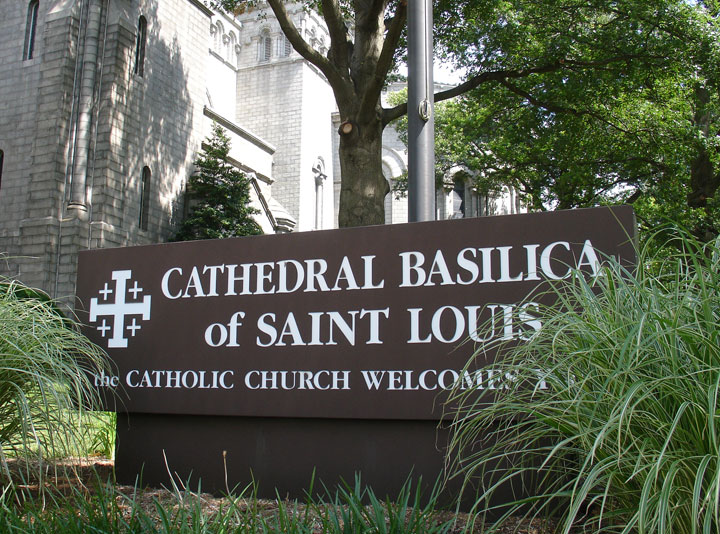
Planning for the cathedral began under the authority of Archbishop Peter Richard
Kenrick in the 1870s and 1880s, and a fund was created for the construction of
the building by Archbishop John Joseph Kain. A formal organization promoting the
new cathedral was created on April 28, 1871, and among the members of the St.
Louis Cathedral Building Association were Archbishop Kenrick, Bishop Patrick
John Ryan, and a variety of local businessmen. Initial site selection indicated
that the new cathedral would be built on a city block bounded by 22nd and 23rd
streets, and by Pine and Chestnut streets, at a location east of the actual
construction site.

However, the initiative for construction was only begun after the elevation of
Archbishop John J. Glennon. A ceremony was conducted on May 1, 1907 for the
groundbreaking of the site, and a formal laying of the building's cornerstone
took place on October 18, 1908. By 1914, enough of the building was complete for
a dedication ceremony, yet full consecration did not take place until June 29,
1926. Even after consecration, completion of the cathedral's mosaics was not
accomplished until 1988.
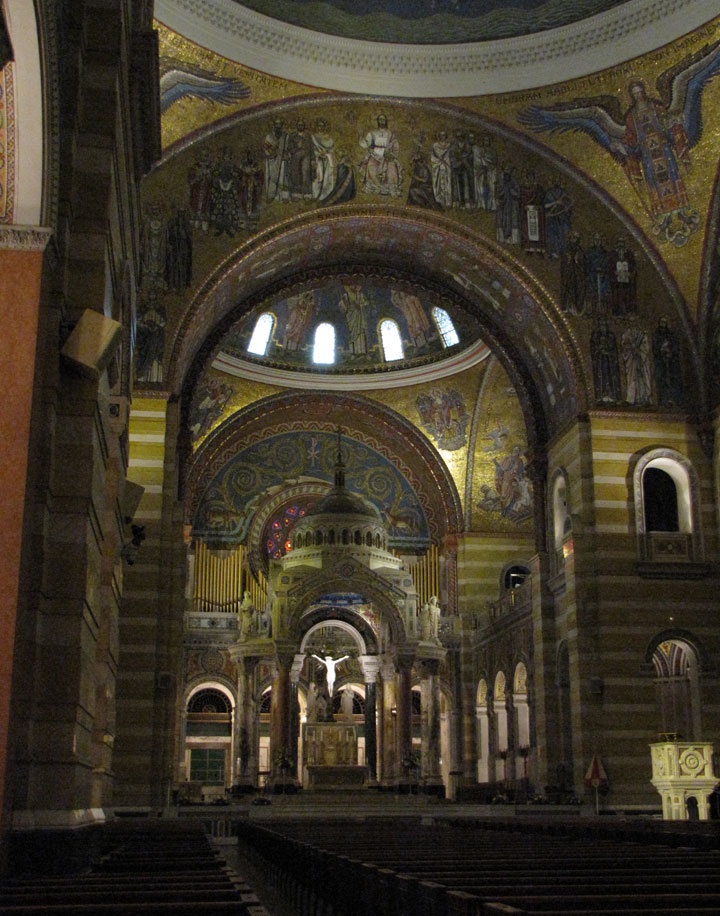
Interior of the Cathedral
In 1912, installation of mosaics in the interior began. Completed in 1988, the mosaics collectively contain 41.5 million glass tesserae pieces in more than 7,000 colors. Covering 83,000 square feet (7,700 m2), it is one of the largest mosaic collections in the world.
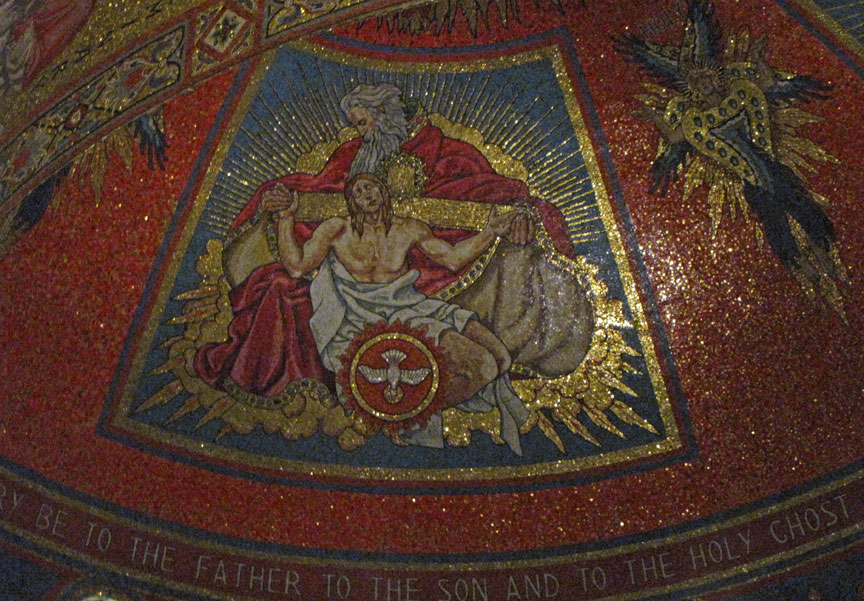
one of the mosaics
While the mosaics in the side chapels and sanctuary walls were designed and installed by Tiffany Studios, the mosaics in the main cathedral areas were designed by Albert Oerken. Installation of the mosaics was completed by dozens of artisans, including Hildreth Meiere, Ravenna Mosaic, Inc,. and Emil Frei, Inc., of St. Louis. The narthex of the church depicts the life of King Louis IX of France, namesake of the city and church, the rear dome includes mosaics of significant archdiocesan events, while the main dome by Jan Henryk de Rosen depicts Biblical scenes from both the Old Testament and New Testament.
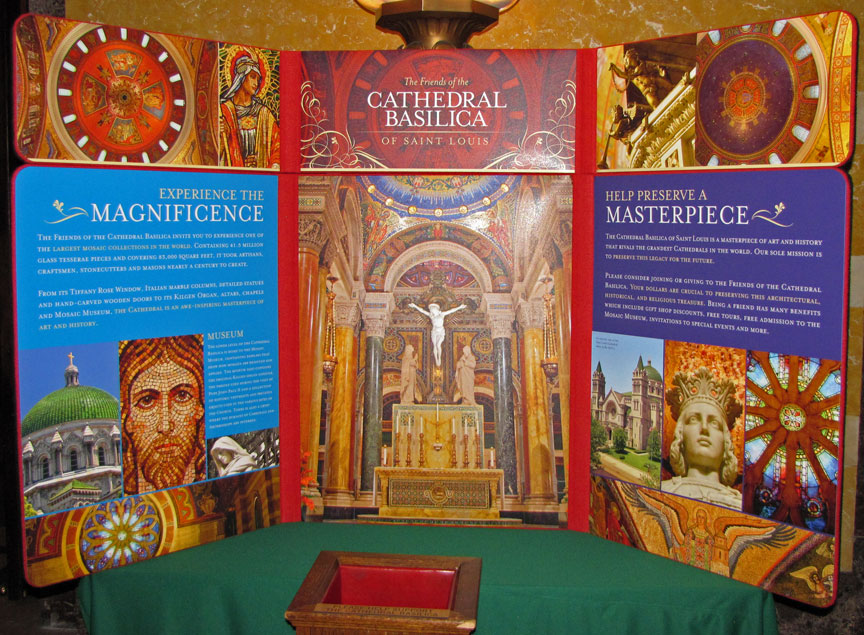
in the Museum
The church basement contains a museum dedicated to the mosaics in the church as well as some of the other artifacts found within the Cathedral. Also in the church basement is a mortuary chapel with a number of crypts for former leaders of the Archdiocese. Currently, Cardinals John J. Glennon, Joseph Ritter, and John Carberry, as well as Archbishop John L. May are buried in the Cathedral's crypt. Luke E. Hart is also buried there.
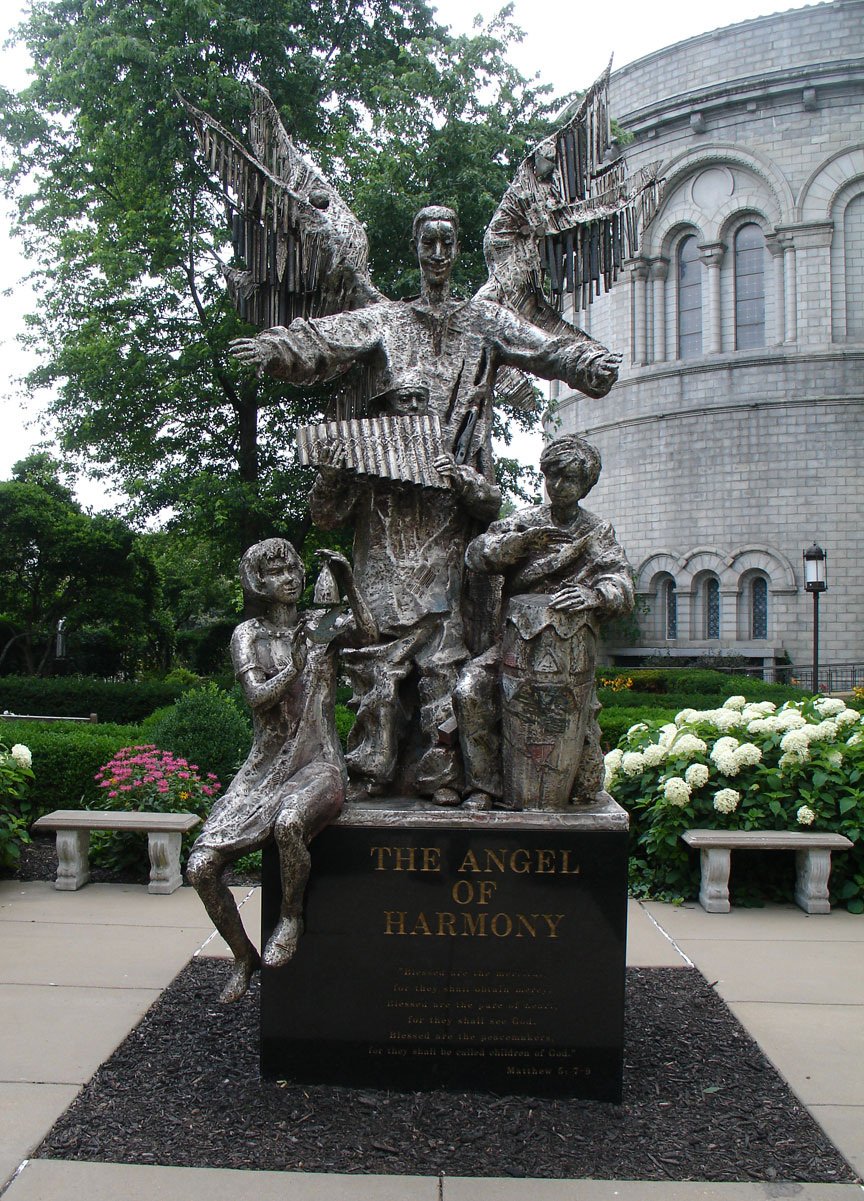
"The Angel of Harmony" by Wiktor Szostalo.
In 1999, a 14-foot high, welded stainless steel sculpture by Wiktor Szostalo was installed on the side lawn of the church. The sculpture was a gift from Adelaide Schlafly in memory of her late husband, Daniel Schlafly, a Catholic layman who was dedicated to the cause of racial justice and peace. It features a winged angel with African-American features, standing behind three children with Hispanic, Asian and European features, playing a song of peace on their instruments. The statue's base is of granite and is inscribed with quotations from the New Testament, Pope John Paul II, and Martin Luther King, Jr. The sculpture emphasizes a theme of harmony, peace, and racial justice, according to Auxiliary Bishop Edward Braxton, who suggested the project to Archbishop Justin Rigali.
Text from Wikipedia
Exterior
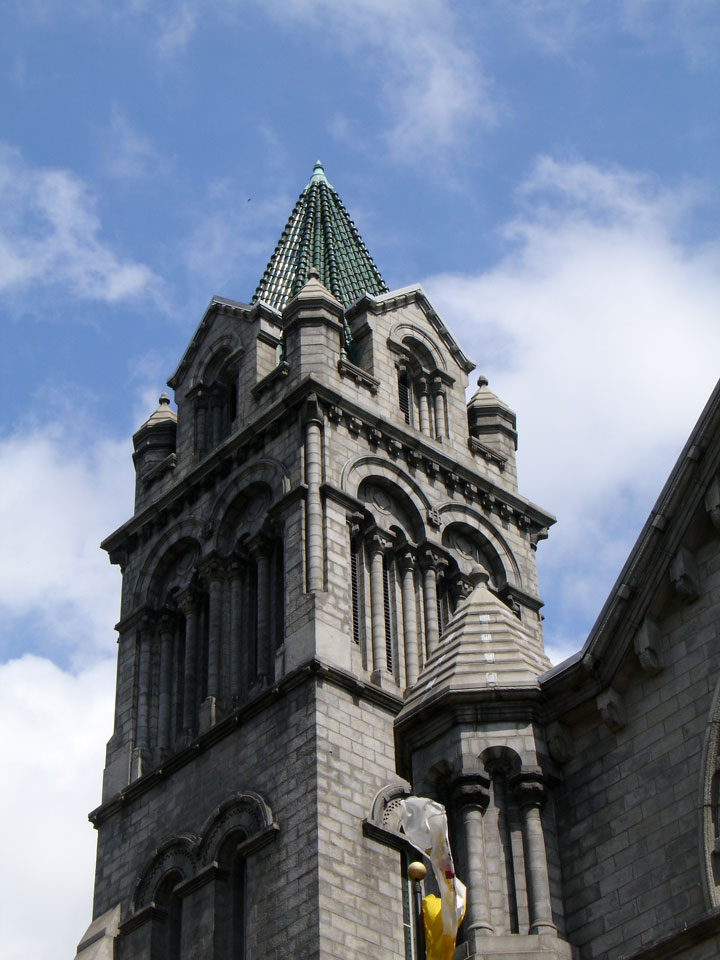
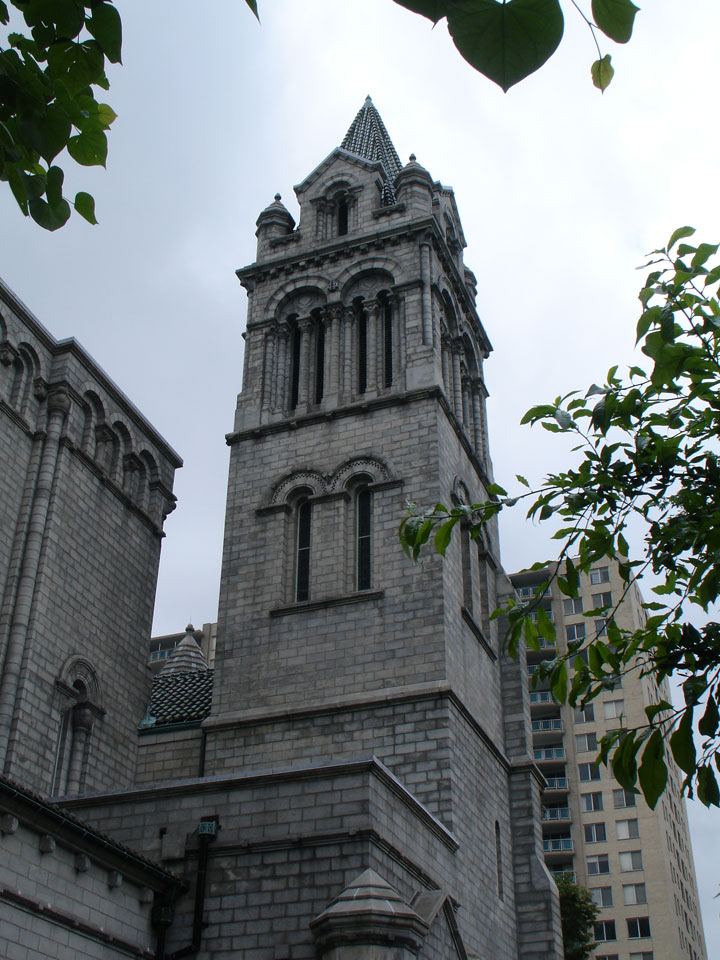
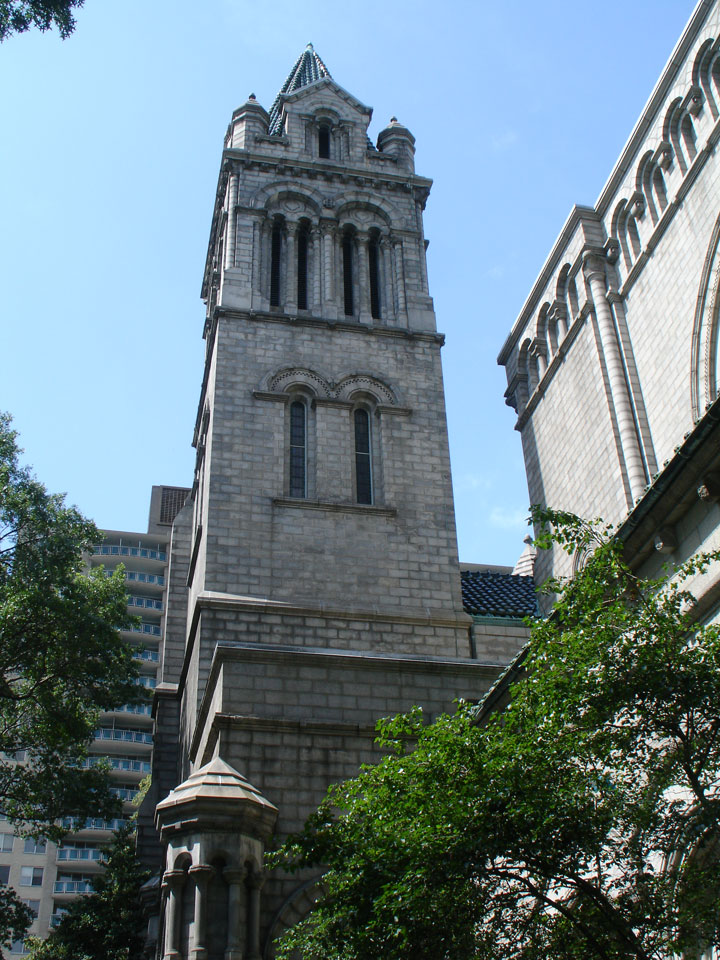
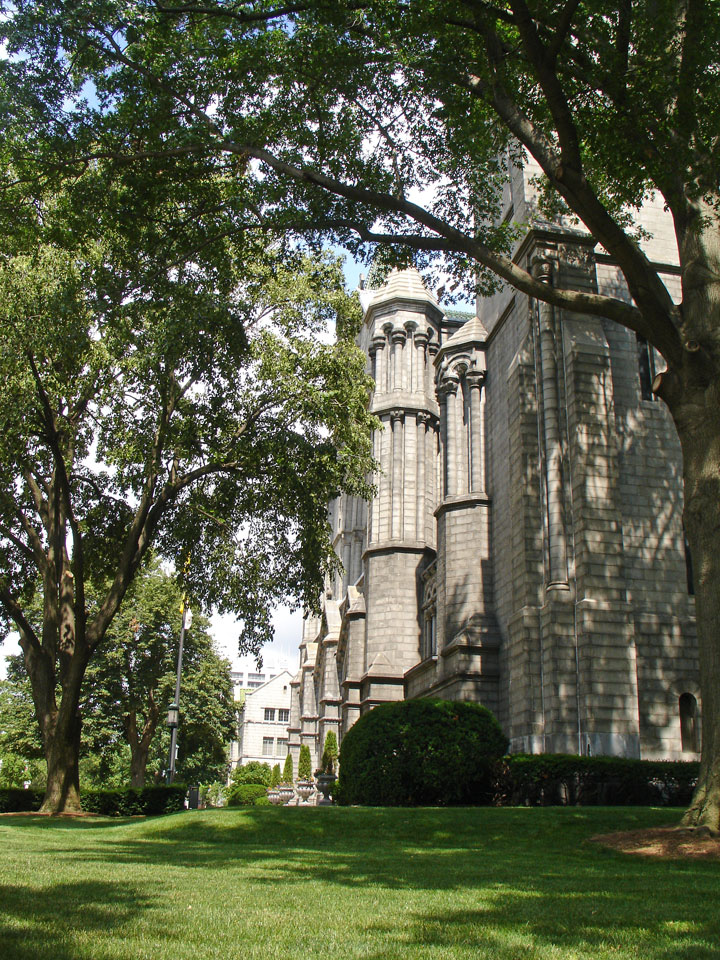


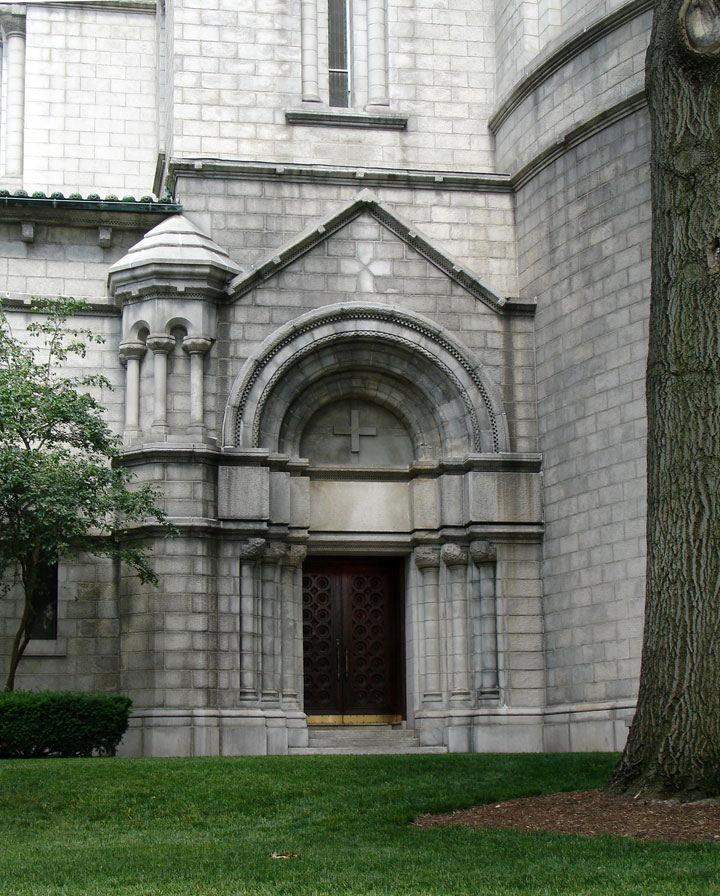
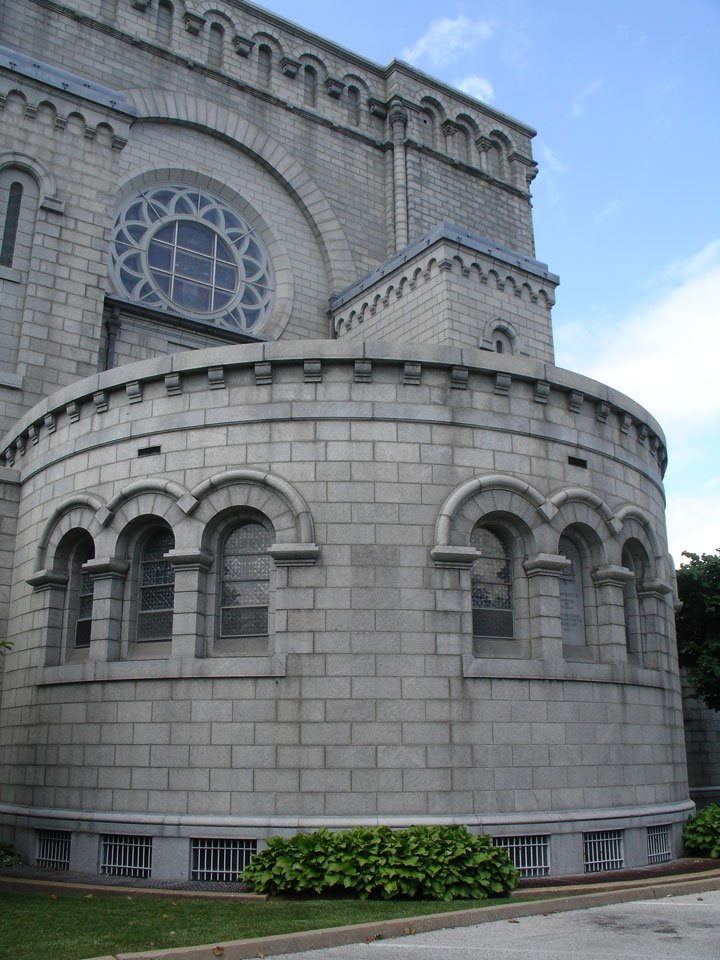
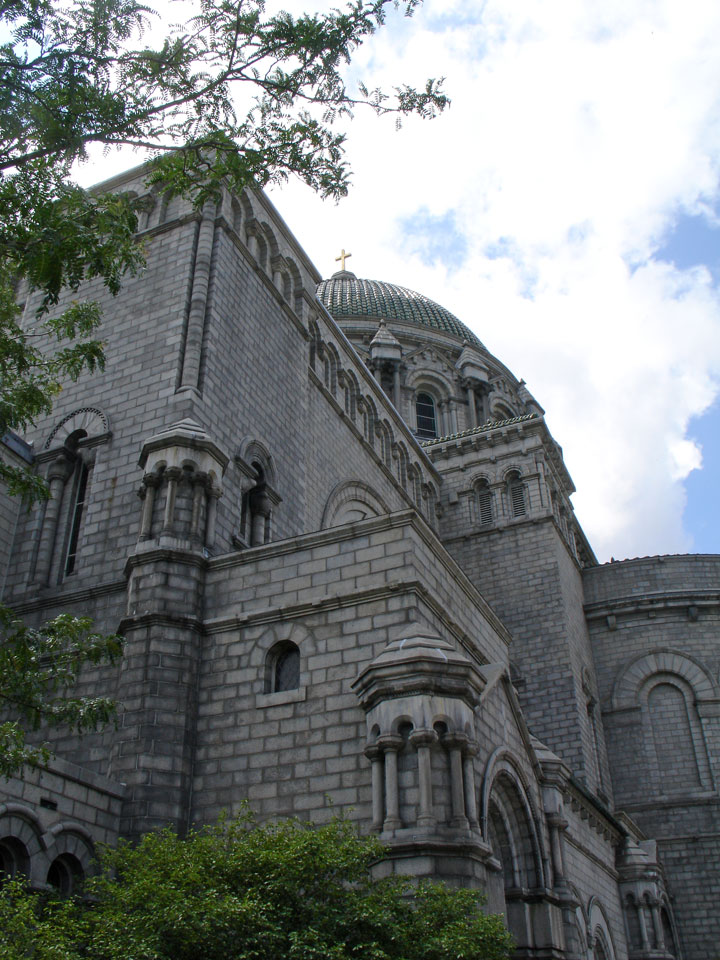
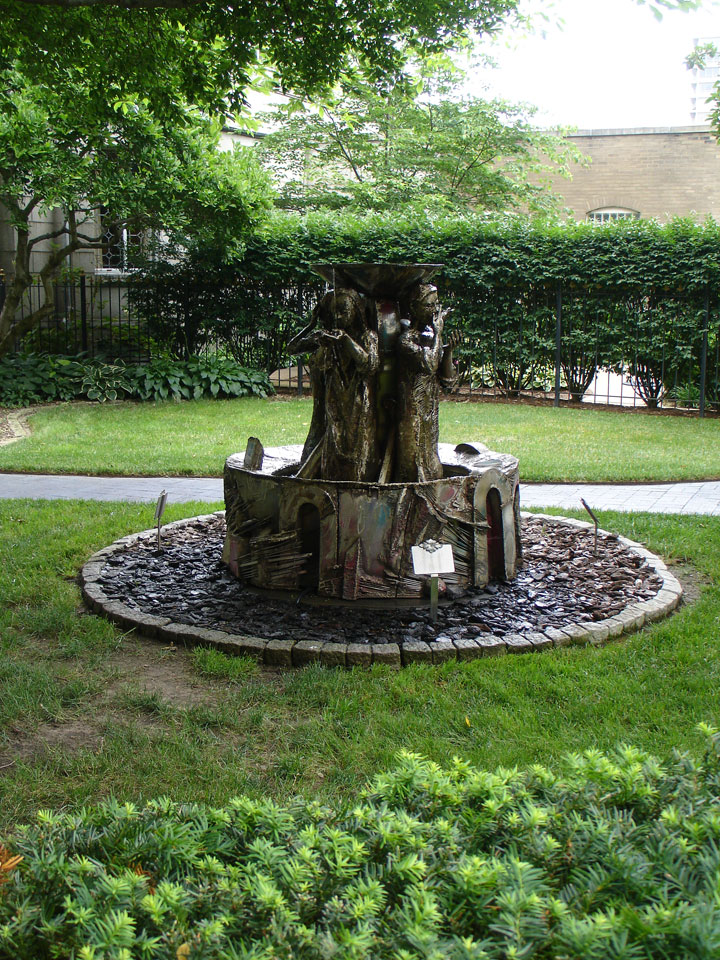

over the main entrance
Interior
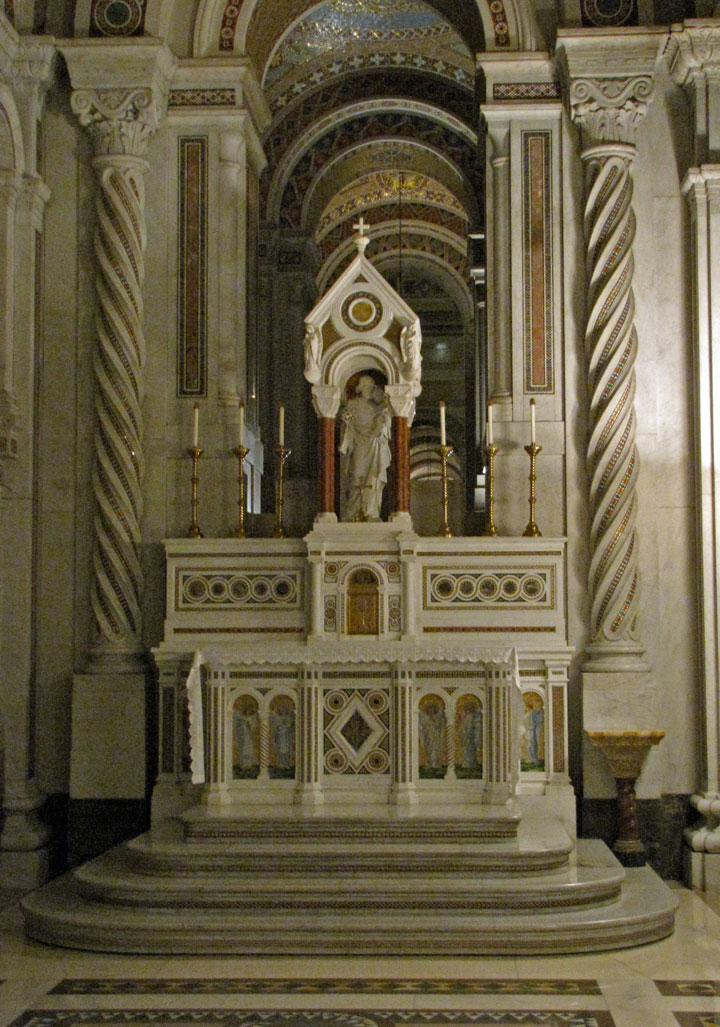
side chapel
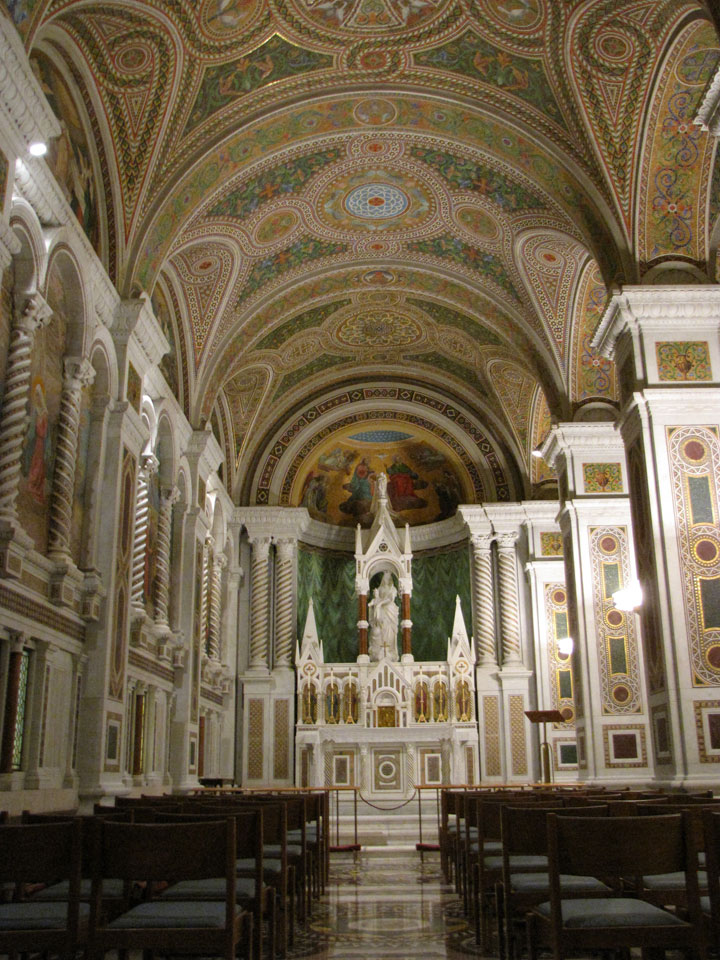

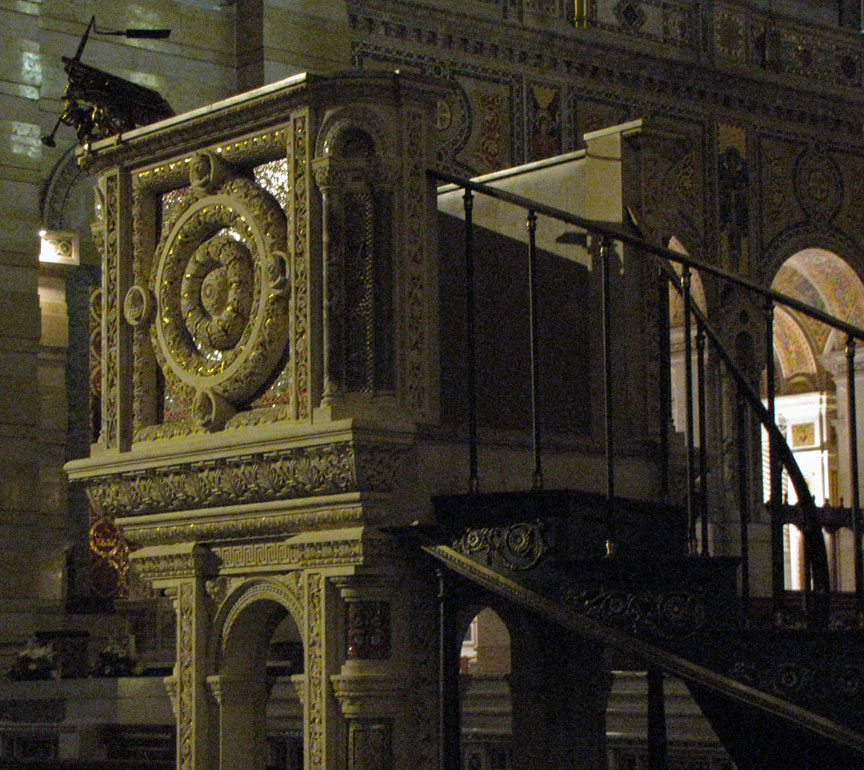
pulpit
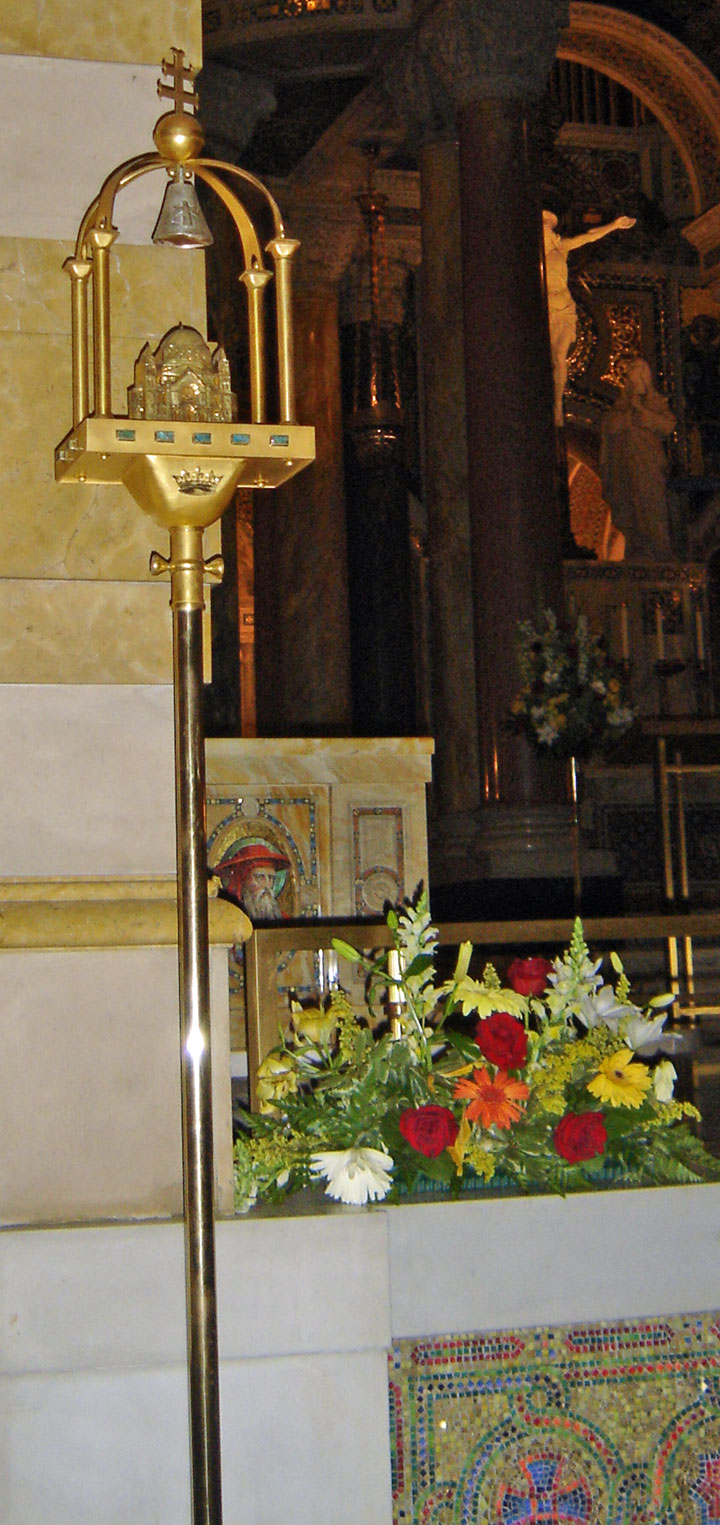
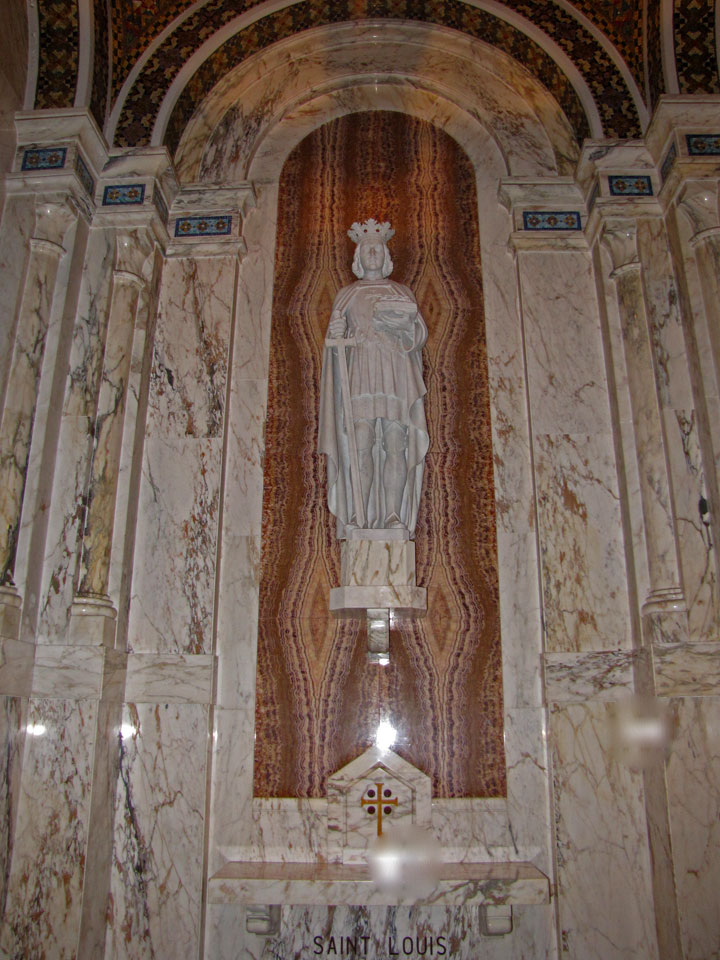
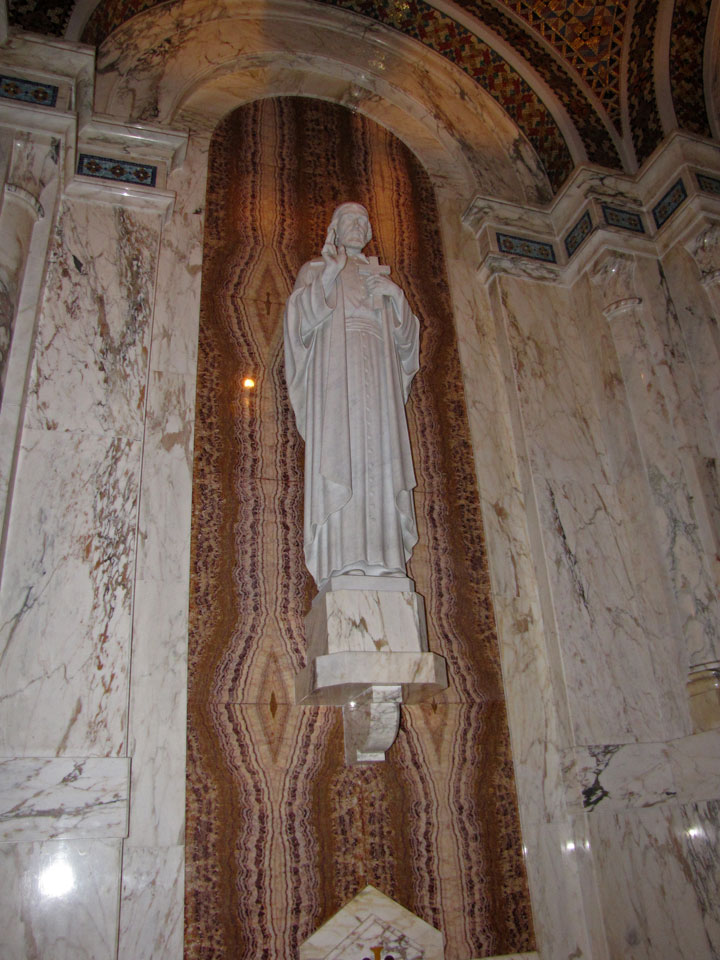
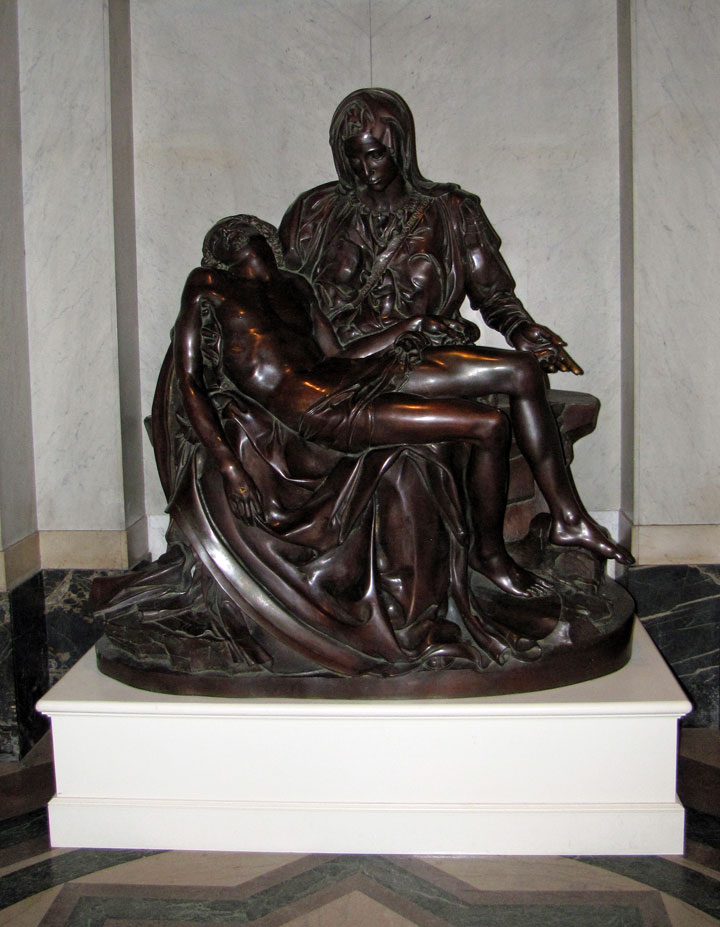
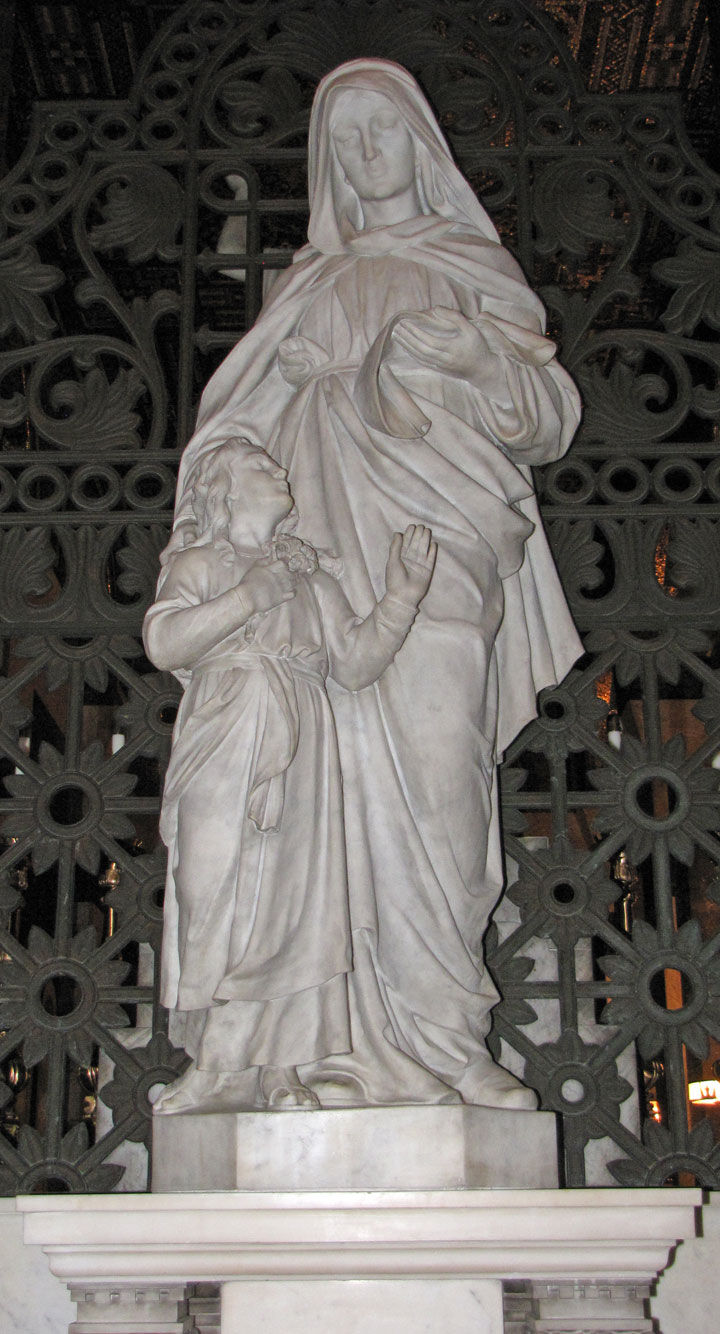
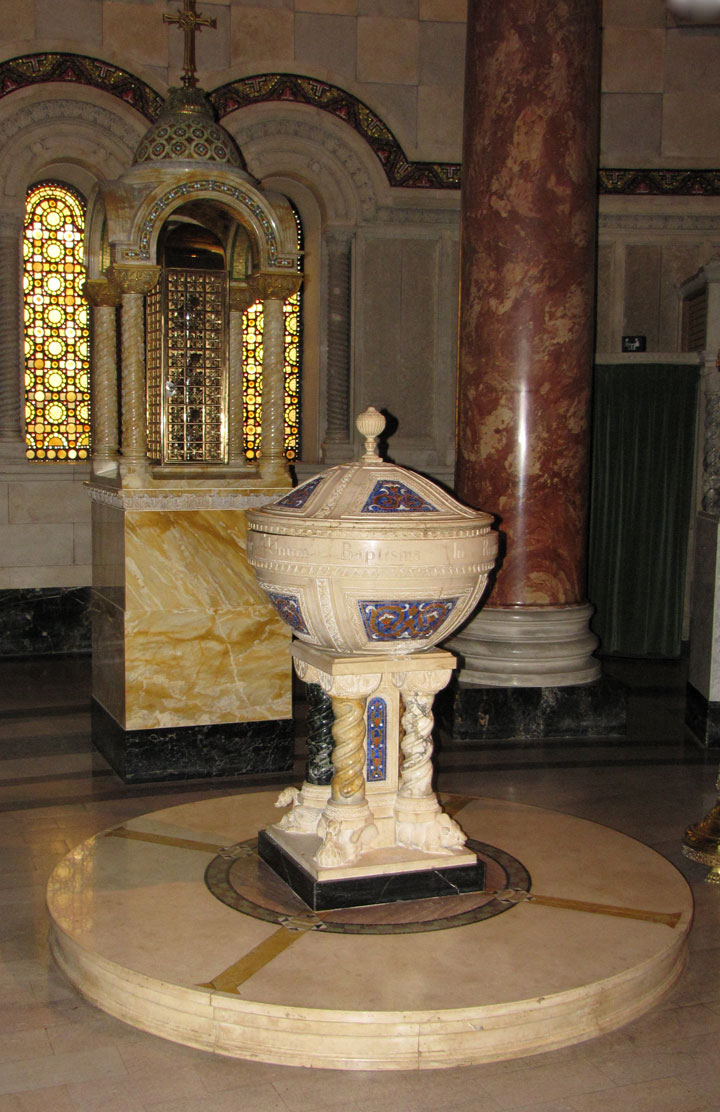
baptistery
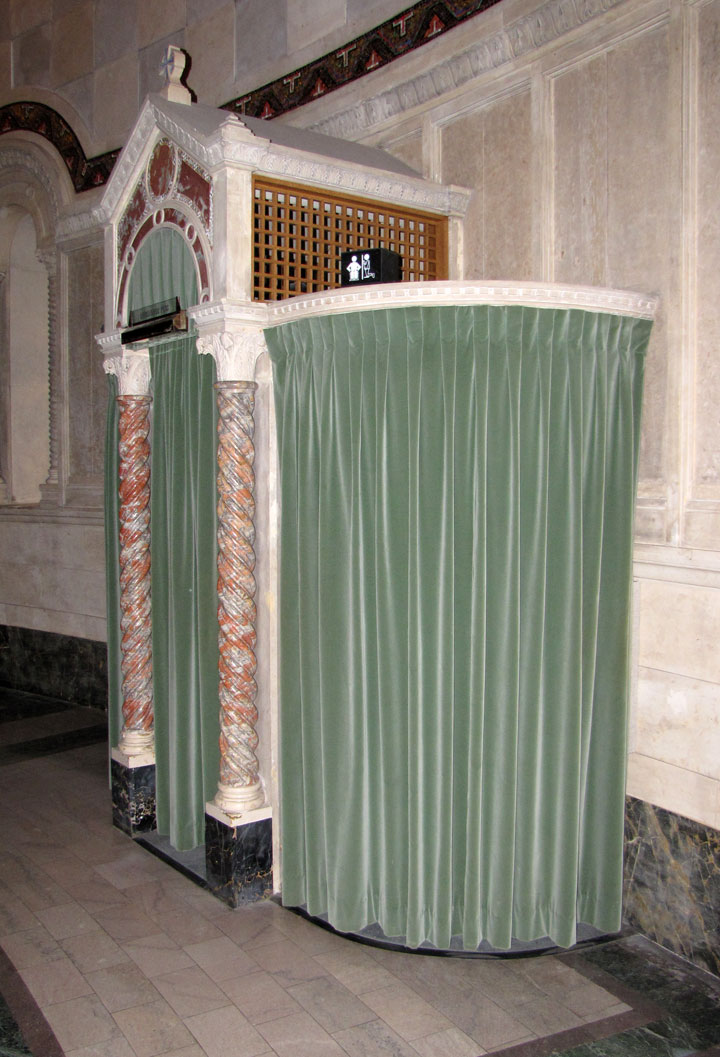
confessional
Mosaics
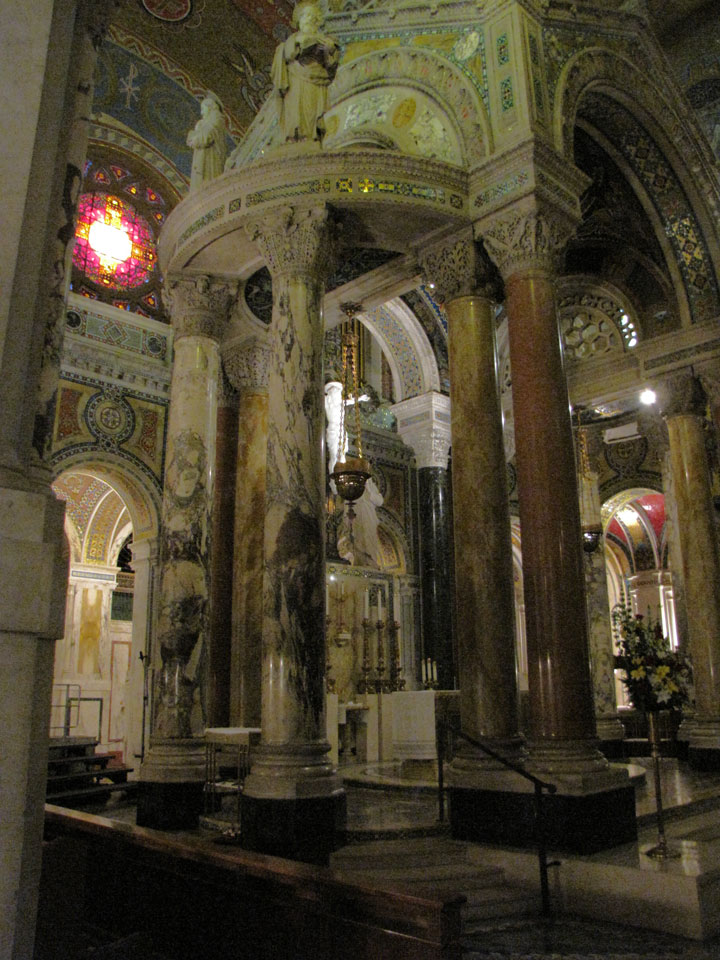
altar canopy
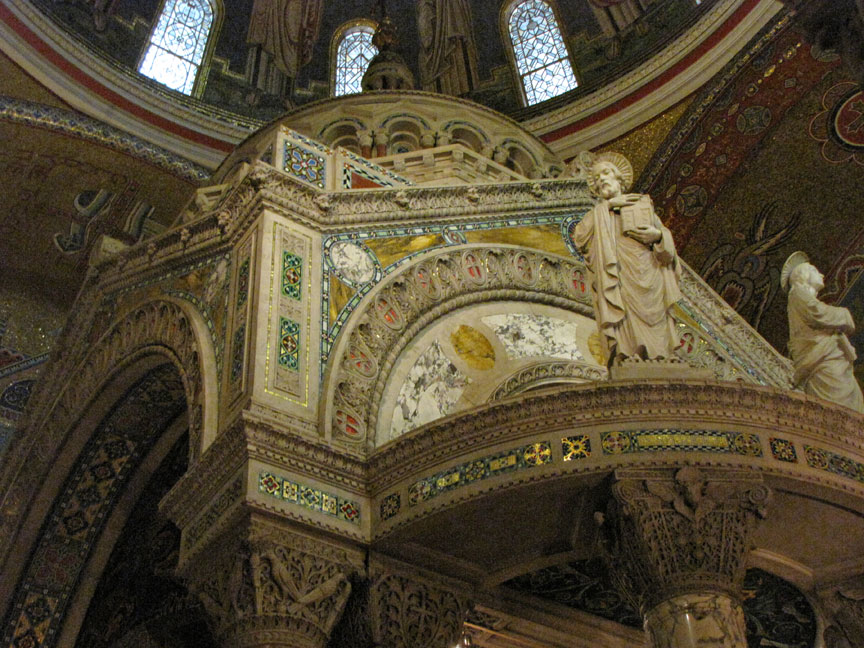

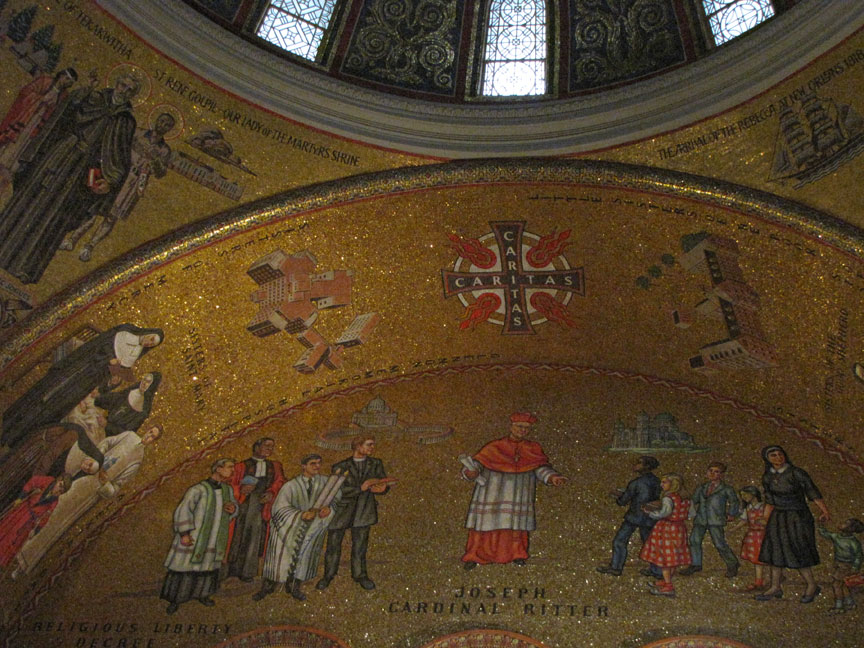


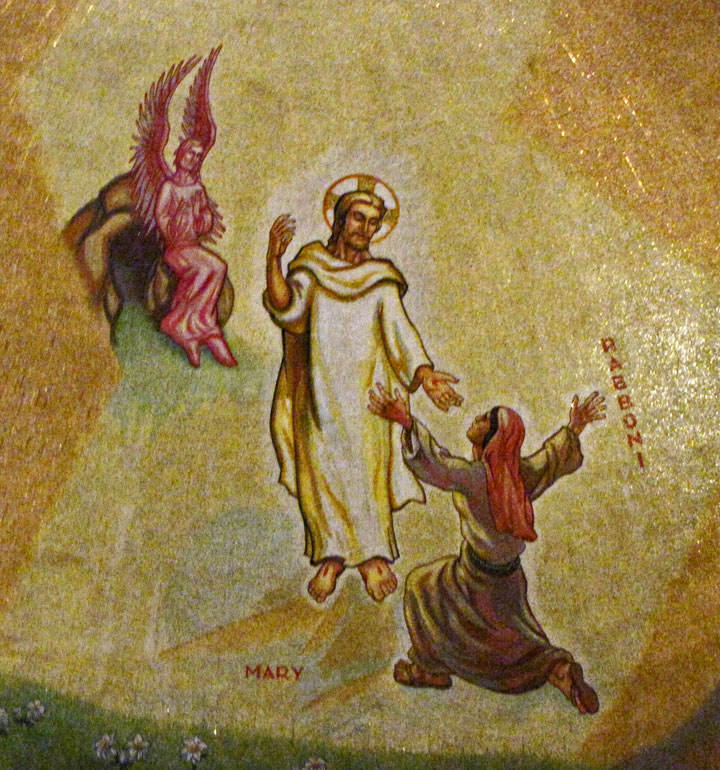
detail

dome


mosaic ceiling

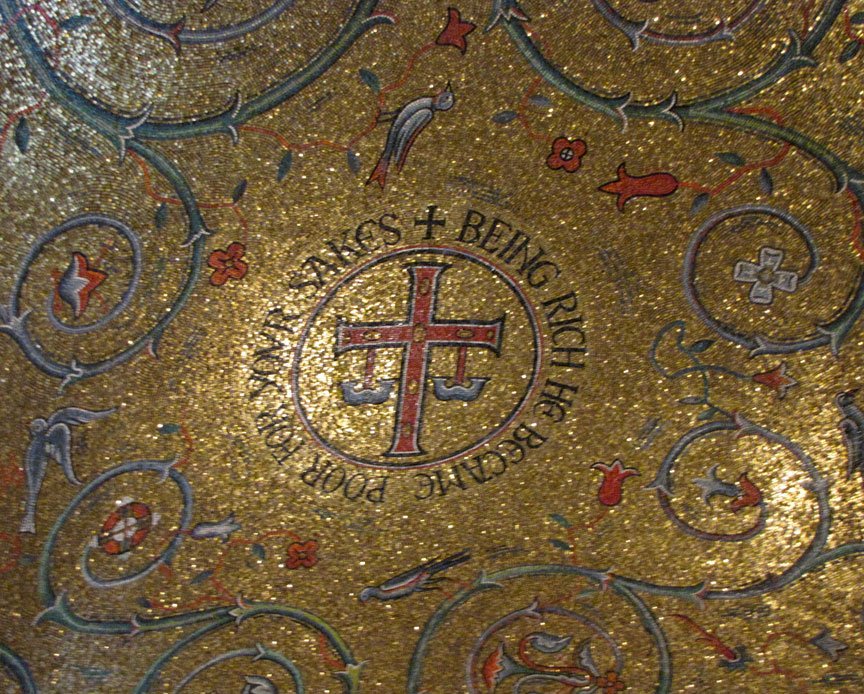

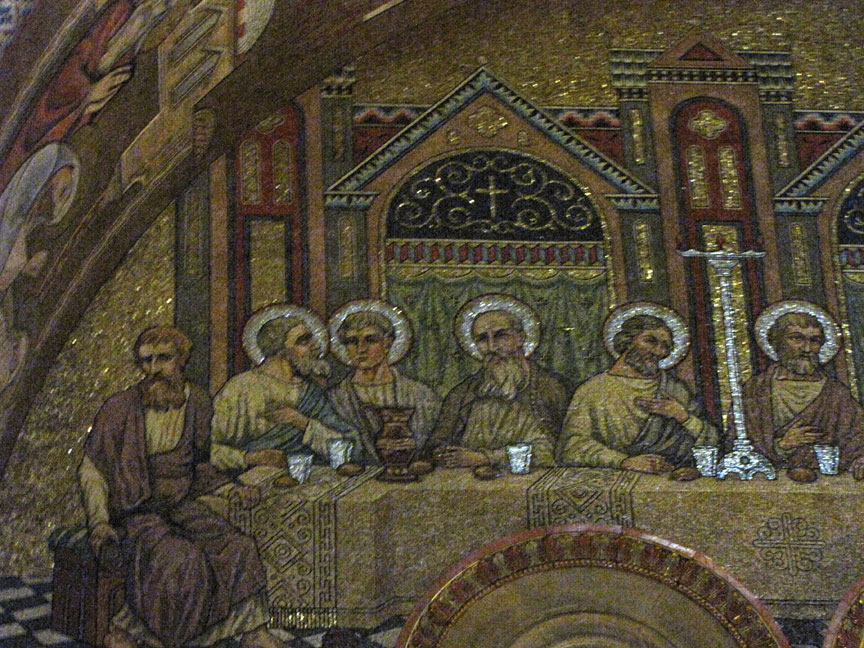
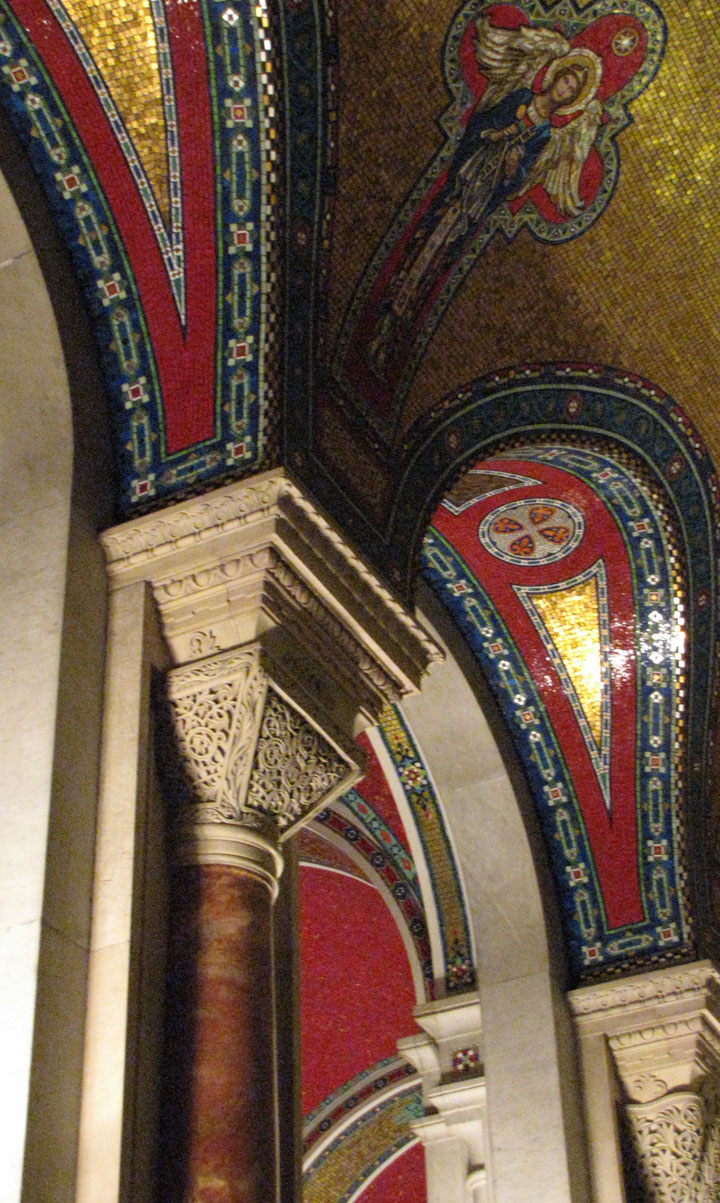
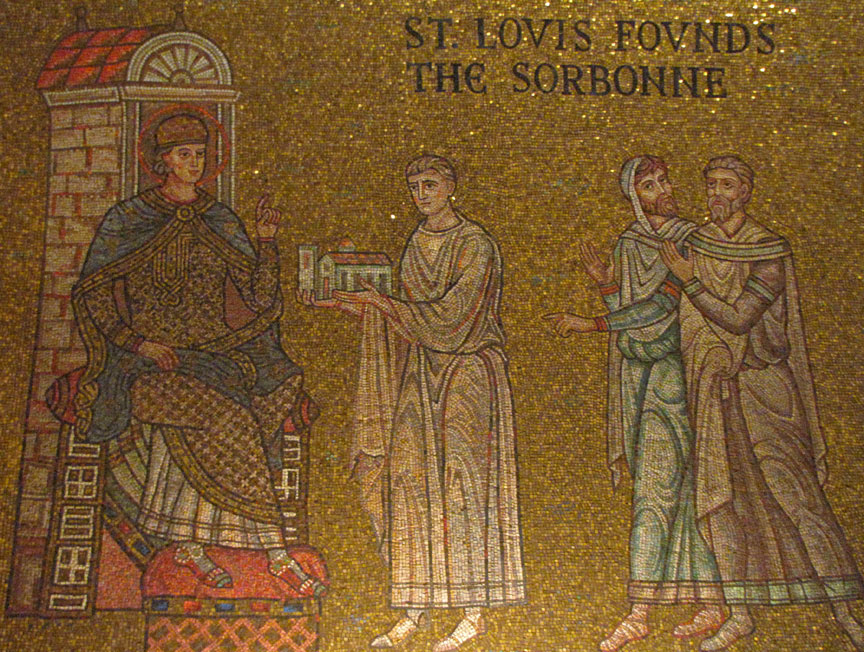
St Louis series


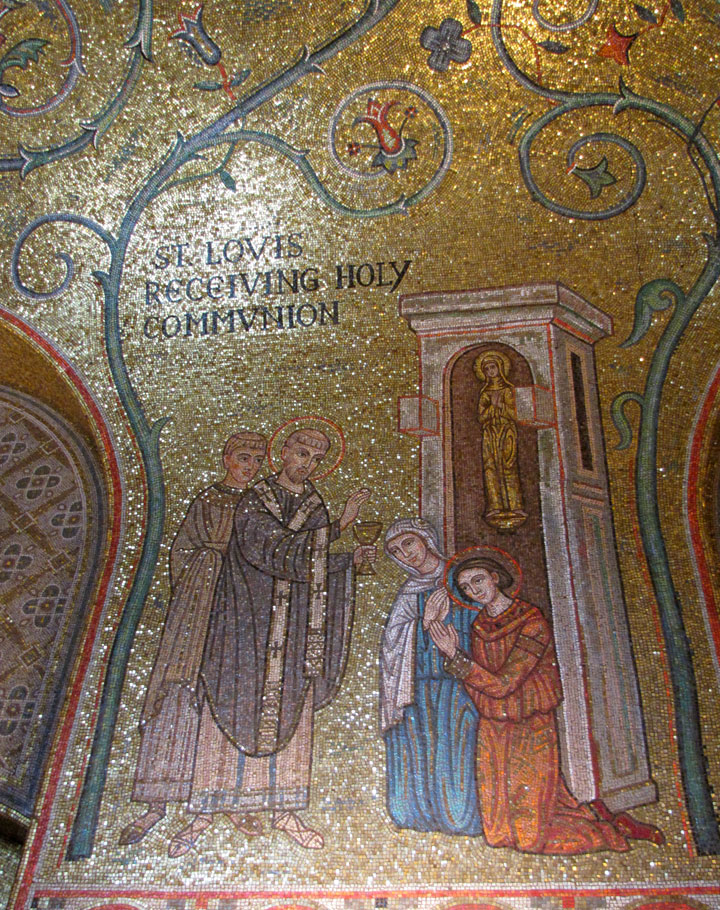
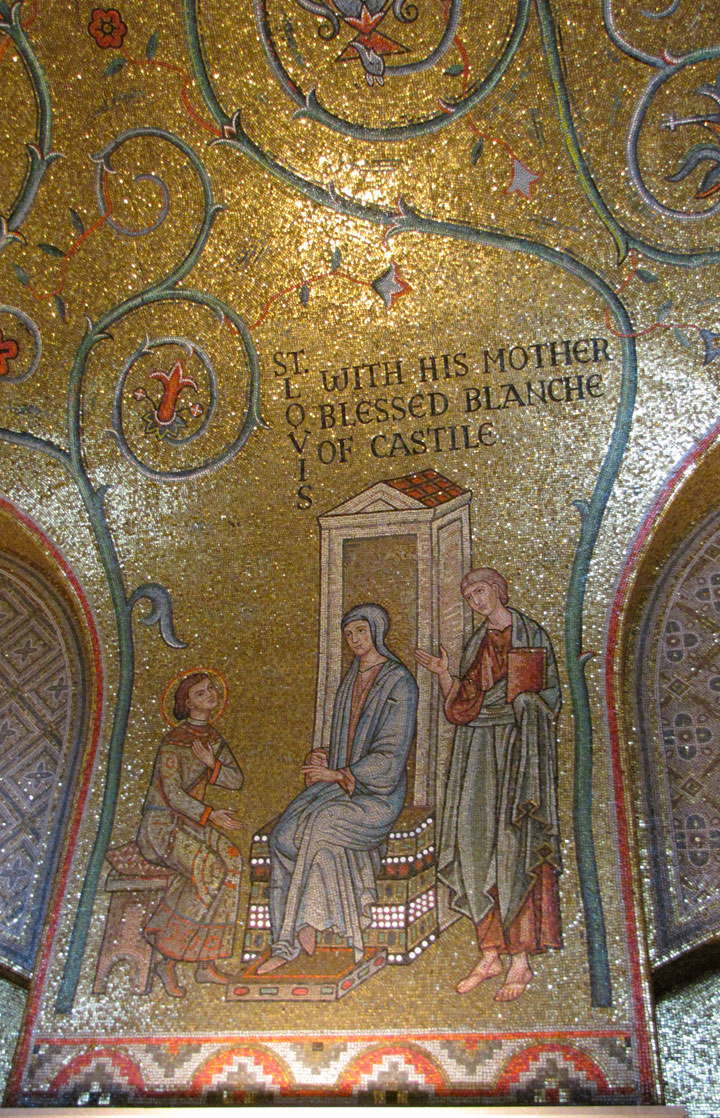
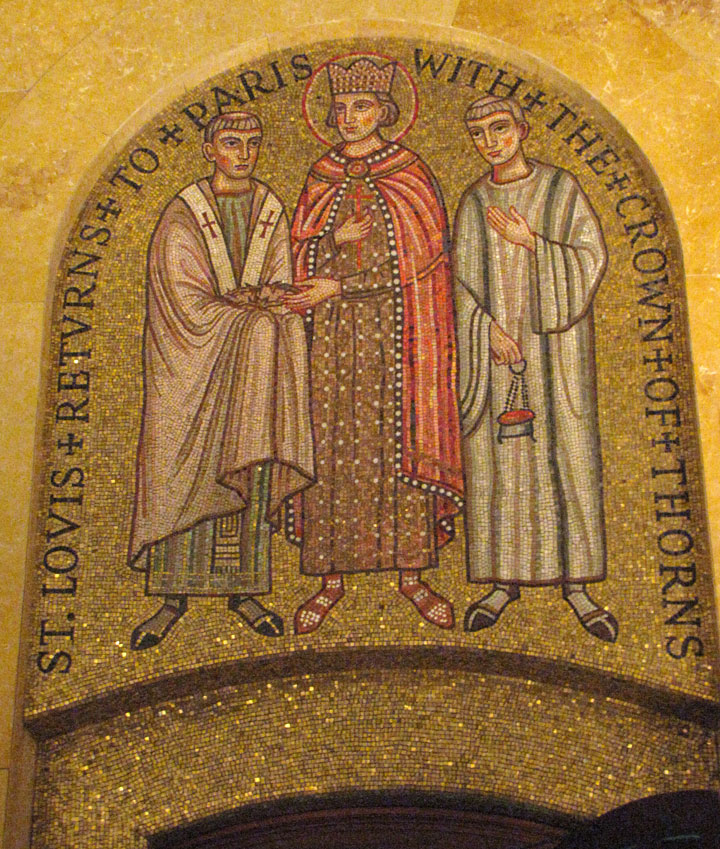
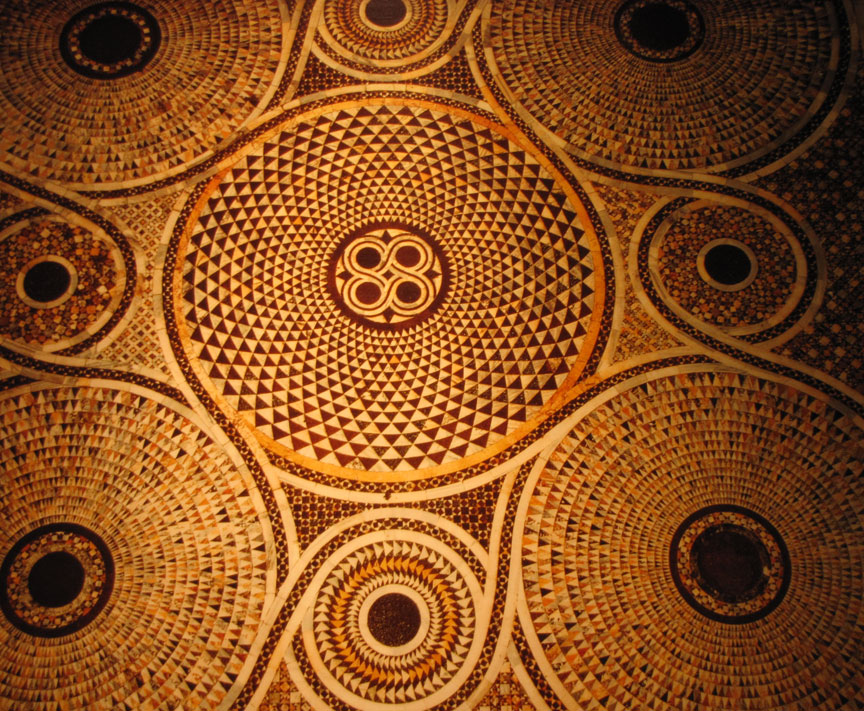
floor detail
Crypt
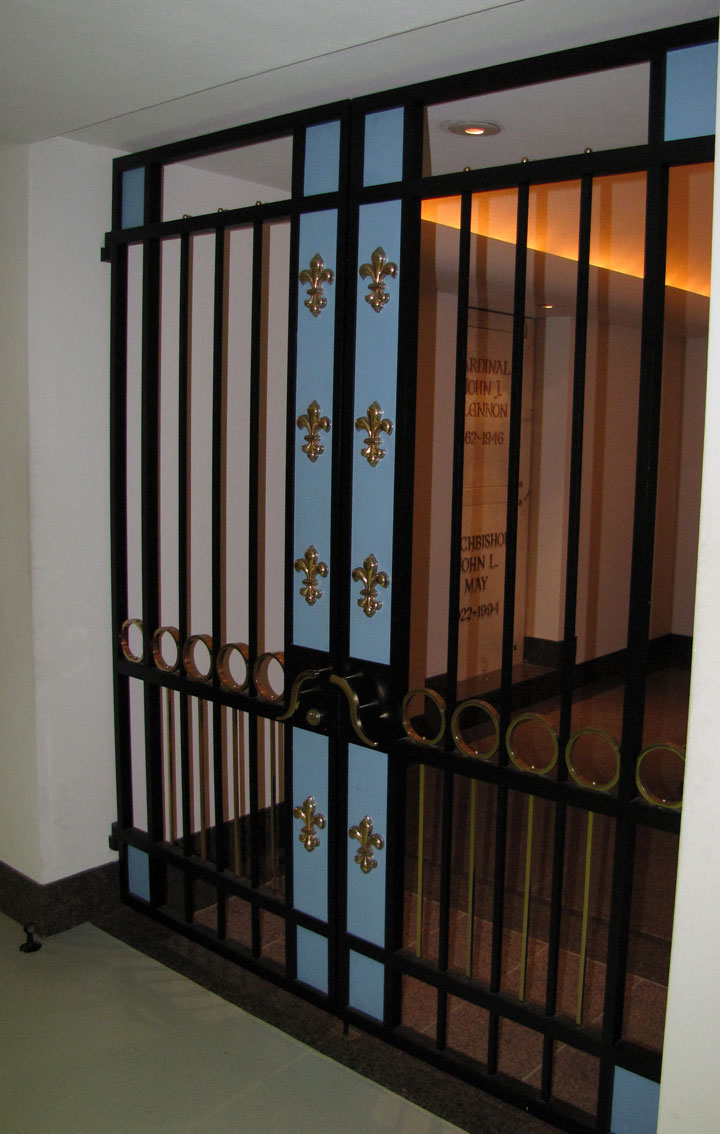
crypt gate
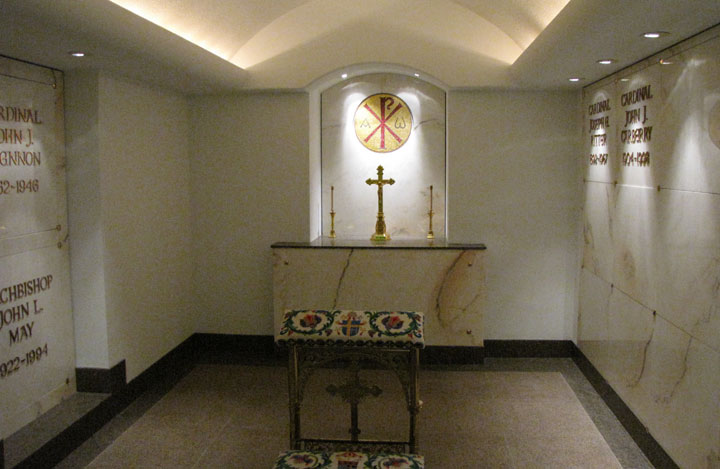
crypt
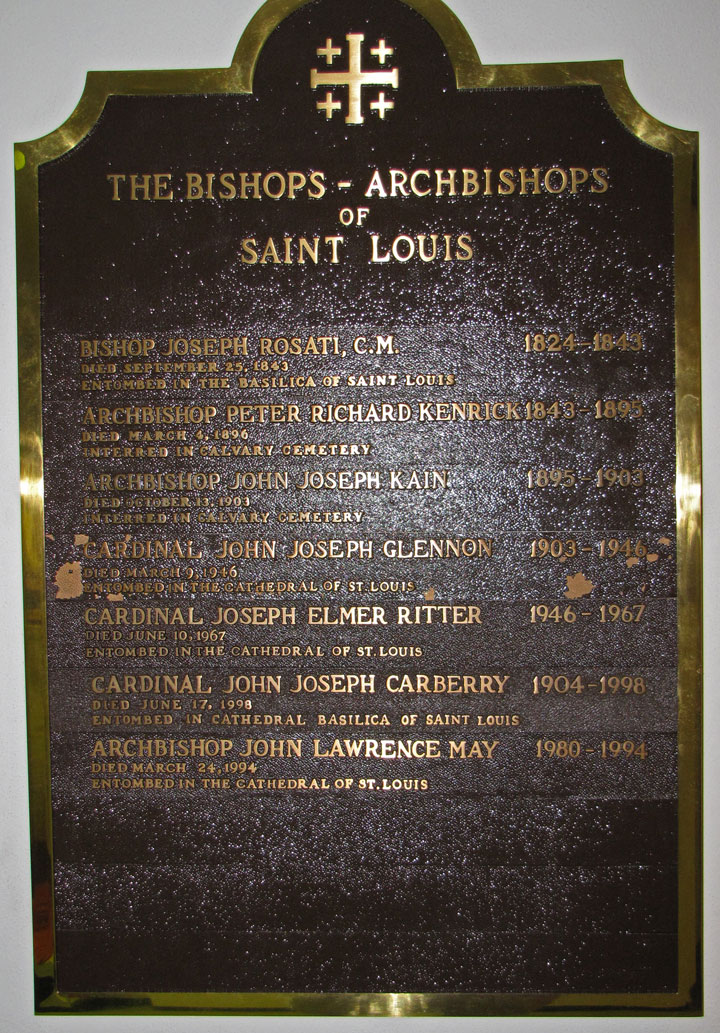
Archbishops of Saint Louis
Museum
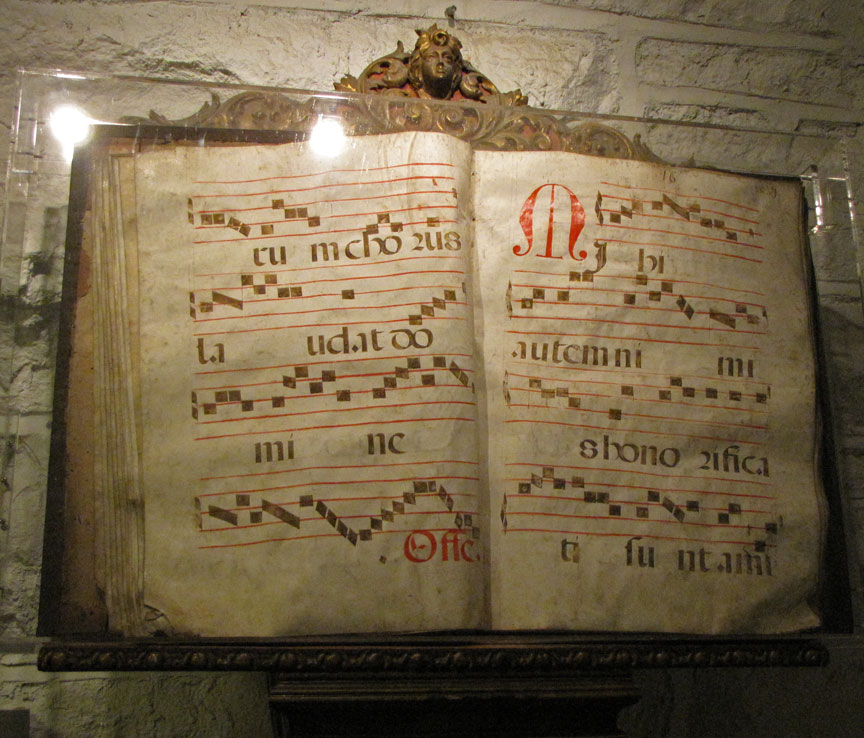
choir music book

museum poster
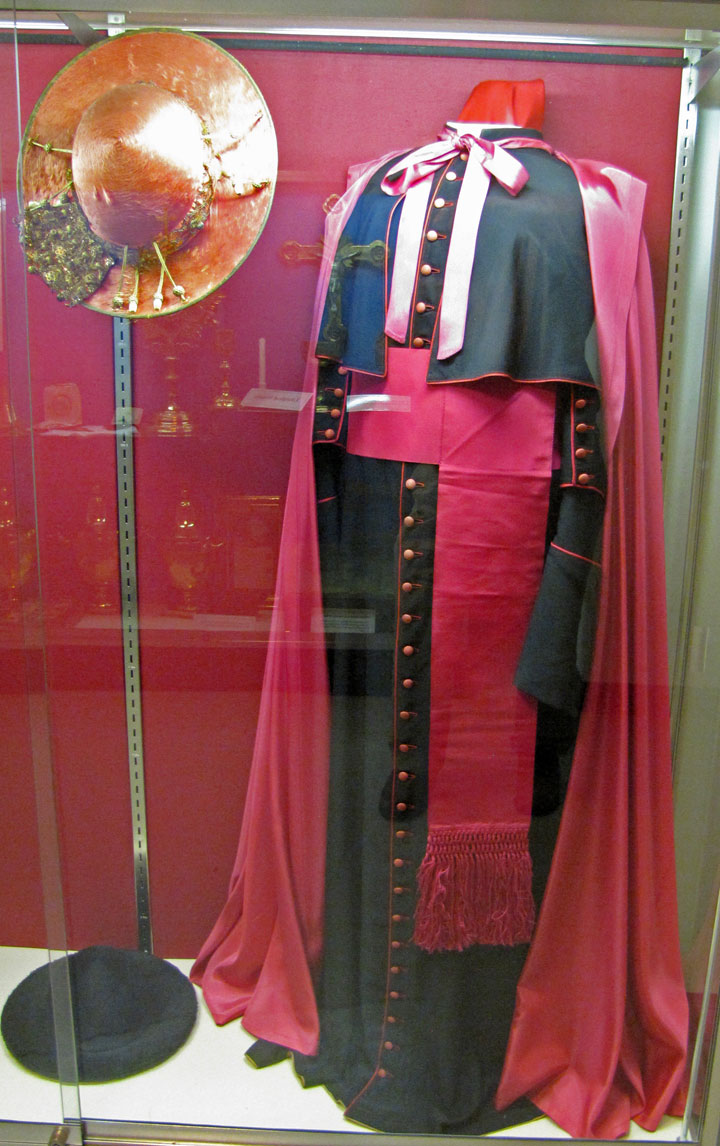
bishop robes